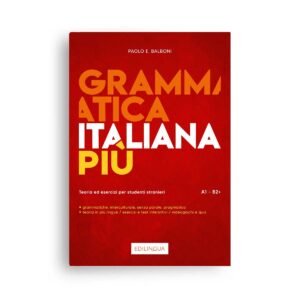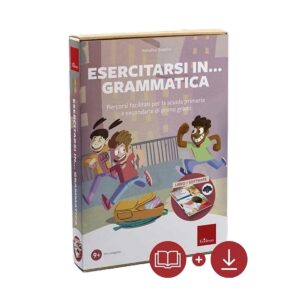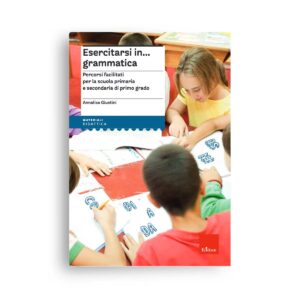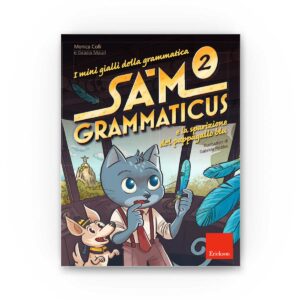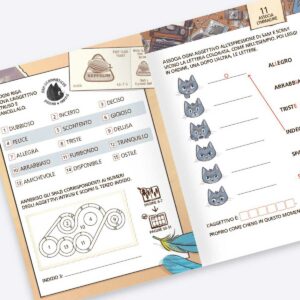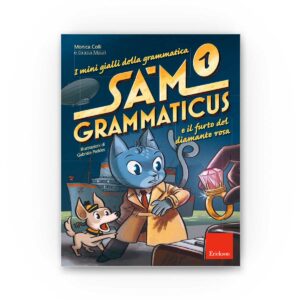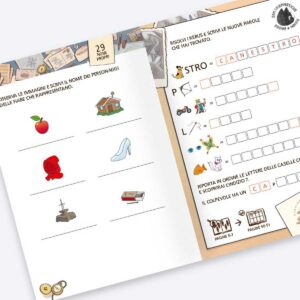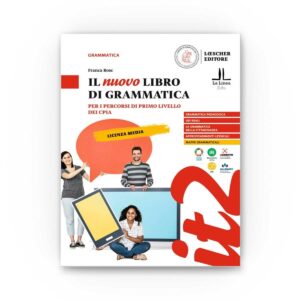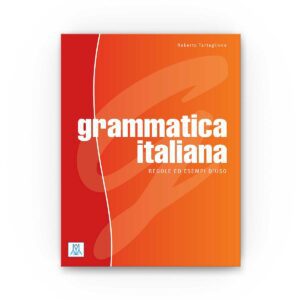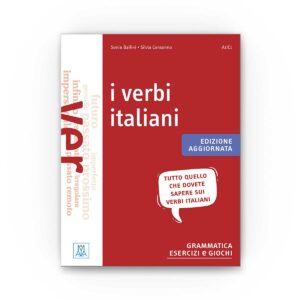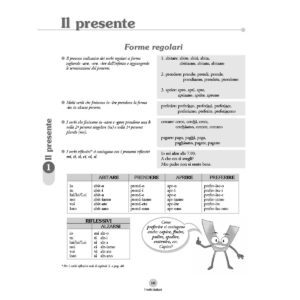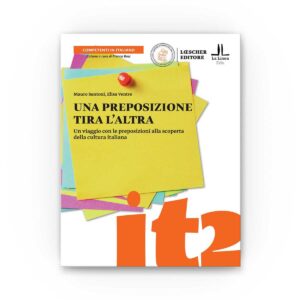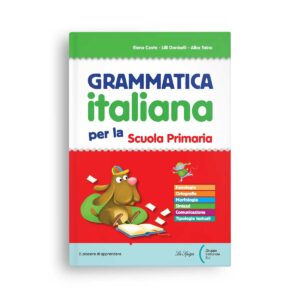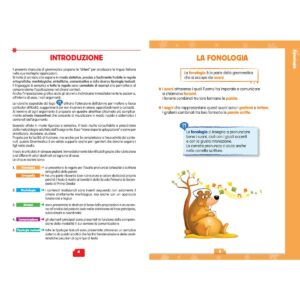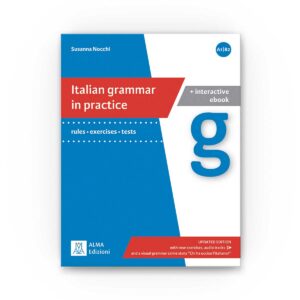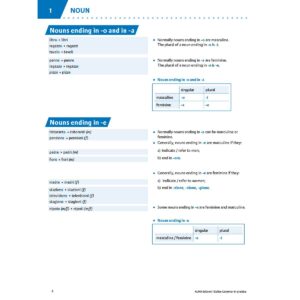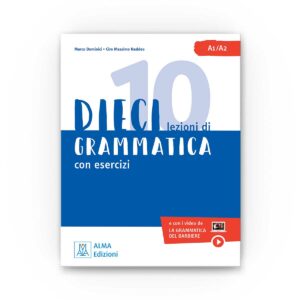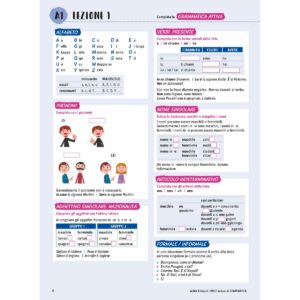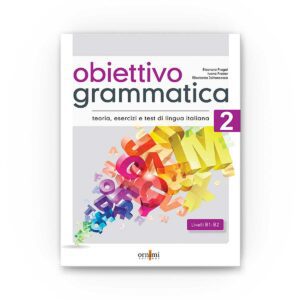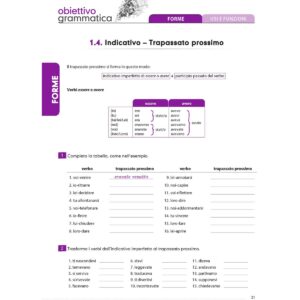Grammatica italiana
Italian grammar. Learn the rules of Italian with clear and easy-to-understand explanations, practical overviews, cute grammar illustrations, downloadable material and exercises. Train verb conjugations with TRAINER VERBI.
Beginner A1
20 irregular verbs in the present tense
List of 20 irregular verbs in presente: andare, fare, venire, salire,…
30 irregular verbs in passato prossimo
List of important verbs – with audio and interactive exercises.
Articulated prepositions
In Italian there are nine prepositions: di, a, da, in, con, su, per, tra, fra. Most of them can combine with the article, i.e. a + il = al.
Definite articles
Defined articles in Italian vary according to the gender, number and initial letter of the following word.
Essere and avere – To be and to have in Italian
Learn the conjugation and some use of the most important Italian verbs essere and avere.
Indefinite article
Indefinite articles in Italian vary according to gender and the first letter of the following word.
Italian adjectives
In Italian, adjectives must be adapted to gender and number. There are two adjective classes: O and E adjectives.
Italian subject pronouns
Learn the Italian subject pronouns: io, tu, lui, lei, noi, voi, loro.
La casa di ESSERE – passato prossimo with essere
Visual representation of verbs that have ESSERE in the passato prossimo
Masculine and feminine
In Italian there are two genders and three nouns classes: O, A and E nouns, like gatto, casa and cane.
Passato prossimo ESSERE o AVERE: Lista Verbi
List of intransitive verbs with the auxiliary essere or avere.
Plural of nouns
How to form the plural of Italian nouns? Let’s learn the rules to form the plural of nouns in Italian!
Possessives
Which are the possessives? Should you use the possessive with or without the article?
Present tense: conoscere, leggere and other peculiar verbs
The present tense: peculiarity of some verbs
Reflexive verbs
Reflexive verbs are composed of a reflexive pronoun and a verb, like mi lavo.
The Italian present tense
The Italian present tense, its use and some important irregular verbs.
The partitive article in Italian
The partitive article is used to express an indefinite quantity and it has two main functions. Learn the Italian partitive article!
The Passato Prossimo
The Passato Prossimo in Italian: Formation, usage, and important irregular verbs.
The structure of Italian sentences
Learn the basic structure of Italian sentences to make statements, yes/no questions, open questions and negative sentences.
Advanced Beginner A2
Adverbs ending with -mente
Some Italian adjectives can be easily turn into adverbs but adding -mente: lento > lentamente.
Difference between adjectives and adverbs in Italian
When learning Italian it’s sometimes not very clear when we have to use an adjective and when an adverb.
Difference between Imperfetto and Passato Prossimo
Both Imperfetto and Passato Prossimo are used to talk about the past.
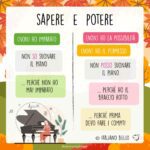
Italian ordinal numbers
The first ten ordinal numbers in Italian has to be learned by heart, then they follow a simple rule.
List of verbs with direct and indirect pronouns
List of verbs with direct and indirect object
Passato prossimo con LO, LA, LI, LE e NE
With these pronouns, the ending of the passato prossimo is aligned.
Sto mangiando: The progressive form
The progressive form represents actions that are in progress.
Intermediate B1
Pronominal verbs – Verbi pronominali
Andarsene, farcela, metterci – What are pronoun verbs and how are they formed?
Questions & Doubts
Signor Rossi, L’ho visto or L’ho vista? Polite form with passato prossimo
Will the ending be adapted to female?
The meanings of SI
The small word SI has several meanings in Italian. Do you know them all yet?
Difference HO SAPUTO and SAPEVO
Sapere has different meanings in passato prossimo and imperfetto.
Difference between HO CONOSCIUTO and CONOSCEVO
Conoscere has different meanings in passato prossimo and imperfetto.
What is the difference between metterci and volerci?
The Italian verbs metterci and volerci express the time it takes to do something, but they behave differently.
What does servire mean?
Mi serve means I need. Learn how to use this verb and the difference between mi serve and ho bisogno di.
The difference between quale, che and cosa
Let’s get to know the Italian question pronouns quale, che and cosa better.
The difference between SONO DI and VENGO DA
Learn to say where you are from in Italian and the difference between vengo da and sono di.
Learn and train
To learn grammar properly, you need good books for reference and practice. Have you found the right book for you yet?
Italian Grammar
A language consists of two parts: a very large set of words, which is vocabulary, and the rules you need to govern them in order to create other words or sentences. These rules are the grammar of a language. Let’s learn Italian grammar together!
For some of you can grammar appear a bit boring, but don’t you think it’s fascinating to see how other languages work and to discover the similarities and differences between Italian and the languages you already know?
Besides grammar, there are other important things when learning a language. You need a big vocabulary so that you know the right word when you speak, then you need to improve your reading and listening comprehension. You can improve your reading and listening comprehension by reading our stories and listening to them. Besides learning the language, it is also important to learn more about culture and traditions! Discover more about Italy and its culture in our Amo l’Italia section.
Do you want to learn Italian step by step? Our free Italian courses are then just right for you!
